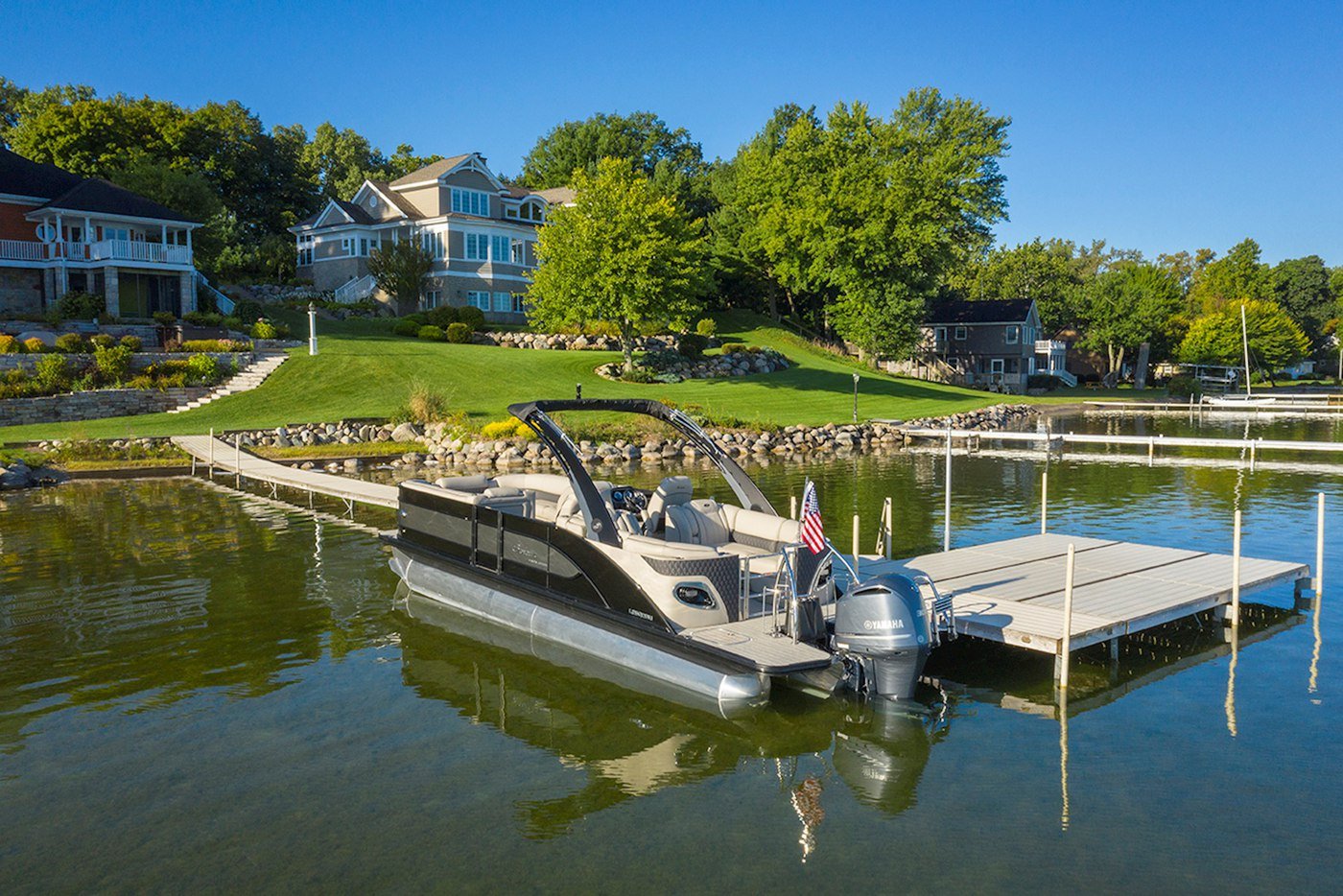How to Dock a Boat in 4 Ridiculously Easy Steps
My boat docking situation is less than favorable. Let me set the scene. My pontoon boat, including the motor, comes in around 29’ in total length. Our dock is located in a narrow channel and the pier itself runs parallel to the seawall.
That means, no matter how I come in, I have to park my boat sideways unlike at a dock that runs perpendicular to the seawall. To make things interesting, I prefer to turn the boat around before docking.
This way, I’m facing the right direction the next time I plan to take off from the dock. What takes this to the next level is the fact that there are two boats parked across the channel from me. So, when I swing the boat around to park, I have to be careful not to hit the boats that are sitting across from my house.
It’s a process, but I’ve been doing it this way for years and have it nailed down to near perfection. In the beginning, I would watch my neighbors cringe in fear for their boats; however, years later, they don’t even think twice about my parking skills.
I tell you this because I know the parking scaries all too well. A majority of the process is mentally preparing yourself so that you’re not so nervous you hit the throttle hard and ram into the dock or a neighboring boat.
Once you’ve conquered the nerves, there’s four steps to parking bliss. I’ve listed each step in detail below. Remember, stay calm, go slow, and practice as much as you can.
How to Dock a Boat
Barletta's Tony Fenech shows us how to dock a boat.
1. Prepare the Boat
While you’re on the water, before approaching the docking area, prepare the boat for landing. Make sure the gear you need is in place such as dock lines and fenders. Doing so will prevent you from scrambling last minute while at the dock.
- Place the fenders at an optimal height on the boat so that they will meet the pier upon arrival.
- Tie the bow and stern lines to the boat cleats on the side that will be affixed to the dock.
- If you’re on a vessel with gates such as a pontoon boat, open the gates for better visibility.
2. Know Your Surroundings
Whether you’re cruising mid-lake or approaching the dock, it’s important to know what the water is like in that area. What is in your path while trying to park? Do you need to use the trim function? Knowing what’s around you will help you prepare mentally for the docking process.
- Be aware of the wind conditions and the current, you may need to use more power than normal if it’s a windy day.
- Make sure there is enough space for the boat to turn around if necessary.
- If you must swing around, what’s in your path?
- Will you be tying up to a cleat or a post? Make sure you know how to tie up either way.
- Is the area near the dock shallow? If so, you may need to trim up. If that’s the case, as the trim comes up the boat will react differently than when the trim is down. Practice the trim function out on the water, this will help you get a feel for how the engine will react when trimmed up while docking.
3. Approaching the Dock
This is when you start to feel the nerves kick in. The pier is in site and it’s time to make your move towards docking the boat. Remember to stay calm and go slow, let the boat do all of the work.
- Don’t go faster than you’re willing to hit the dock. Many boaters make the mistake of hitting the throttle too fast in one direction. This is where you get into trouble so go slow and take your time.
- Start by coming at the dock on a 45-degree angle.
- Slowly drift in and when your bow has reached the dock gently put the boat into reverse, point the engine towards the dock and reverse until you have brought the stern to the dock.
4. Tie Up to the Dock
You did it! You have successfully made it to the pier and now it’s time to secure the boat. Tie off and assess the situation, you can easily make small changes by hand instead of going through the docking process all over again.
- Before exiting the helm, remove the safety lanyard from your person and make sure the boat is in neutral.
- Keep the engine running as you tie off your bow and stern lines to the dock. Having the engine running will let you react quickly if the boat begins to drift from the dock due to the current or heavy winds.
- Once the boat is tied up and the engine is off, you can make adjustments as needed. You can do this by hand if you just need to move the boat up a cleat or two.
You are now Docked
See, it’s as easy as 1, 2, 3, 4! Don’t forget to shut down the boat and make sure it’s protected from the elements. I usually make sure everything is off including the lights and radio.
Next I go a step further and turn the battery switch to off because a healthy battery makes for a healthy boat. Once the boat is completely shut down, I make sure to clear off the lake gear and any food items that were brought on board.
Lastly it’s time to put on the mooring cover and get ready for the next boat outing so we can do it all over again. Docking may seem like a daunting task, but once you shake the nerves, take your time, and get a feel for your docking process, you won’t think twice about it.



